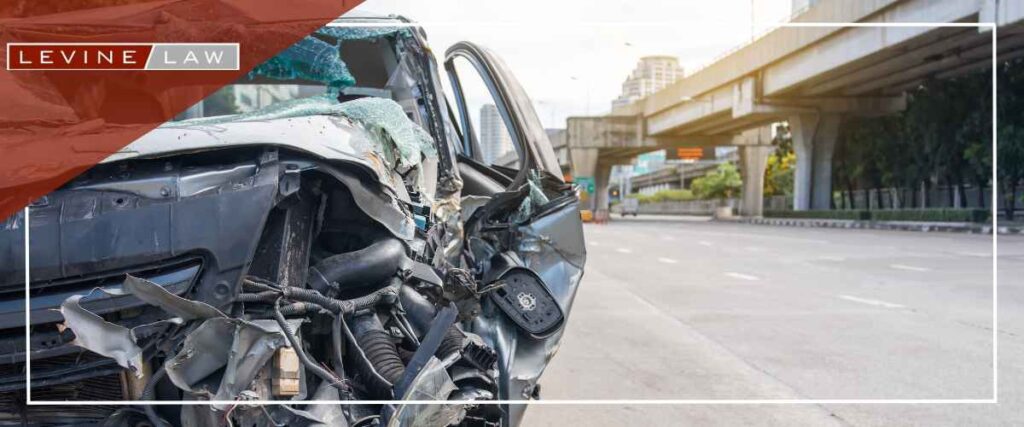Navigating the aftermath of a car accident can be a daunting experience, especially when the incident involves a hit-and-run or miss-and-run scenario. Unfortunately, these types of accidents are not uncommon in Denver and can leave victims feeling overwhelmed and uncertain about their next steps.
Understanding Colorado hit-and-run laws and knowing when to seek the help of a Denver car accident attorney is crucial. Here, you can learn more about the legal implications, potential consequences, and steps to take if you find yourself in such a situation.
Definition and Differences Between Hit and Run and Miss and Run
While hit-and-run and miss-and-run accidents sound similar, there are some differences to be aware of.
Explanation of a Hit and Run Accident
A hit-and-run accident occurs when a driver involved in a collision with another vehicle, pedestrian, cyclist, or property leaves the scene without providing contact information and rendering aid to the injured.
In Denver, these incidents are taken very seriously due to the potential harm and disruption they cause. Denver’s law enforcement agencies and legal systems have stringent measures to track and penalize offenders.
A Colorado hit-and-run can lead to severe legal consequences, including hefty fines, license suspension, and even imprisonment, depending on the severity of the accident and injuries involved.
Explanation of a Miss and Run Accident
On the other hand, a miss-and-run accident involves a scenario where a driver causes another vehicle to swerve, brake suddenly, or crash without making direct contact with it and then leaves the scene.
While less discussed, miss-and-run accidents carry their own set of challenges. For example, proving fault can be difficult since there is no direct physical collision. Moreover, the driver who causes such an incident may not even realize their role in the resulting accident.
In Colorado, victims of miss-run accidents also need to fully understand their legal options and consider consulting with a car accident attorney in Denver to assess liability and pursue appropriate compensation through insurance claims or legal action.
Key Differences in Legal and Insurance Perspectives
The main distinction between hit-and-run and miss-and-run incidents lies in the contact and the resultant proof of involvement.
Hit-and-run cases often have physical evidence, such as vehicle damage or injuries, making it somewhat simpler to prove and pursue legal action. However, miss and run cases lack such direct evidence, complicating establishing fault and obtaining compensation.
Legally, both types of incidents are treated seriously in Denver, with hit-and-run cases typically viewed as more grievous due to the direct impact and potential for injury.
Insurance perspectives also vary. While both scenarios may be covered under comprehensive or uninsured motorist plans, proving a hit-and-run claim can require more substantial evidence and witness statements.
Legal Implications in Colorado
In Colorado, hit-and-run accidents are governed by strict laws designed to hold offenders accountable and protect victims’ rights. According to Colorado Revised Statutes § 42-4-1601, it is illegal for a driver involved in an accident to leave the scene without stopping to offer assistance and provide their contact information.
This applies to any accident resulting in injury, death, or property damage. Failure to comply with these requirements can lead to severe criminal charges, reflecting the state’s commitment to deterring such negligent behavior.
Penalties and Legal Consequences for Offenders
The penalties for committing a hit and run in Denver are severe and reflect the gravity of the offense. Depending on the severity of the incident, consequences can range from misdemeanor charges for minor property damage to felony charges when the accident results in serious injury or death.
Penalties may include substantial fines, restitution to victims, imprisonment, and mandatory community service. Additionally, perpetrators may face license suspension or revocation.
Victim’s Rights and Legal Recourse
Victims of hit-and-run accidents in Colorado are afforded specific rights aimed at ensuring they receive justice and compensation for their suffering. Under Colorado laws, victims can seek restitution for medical expenses, property damages, lost wages, and other associated costs.
Victims can pursue civil claims against the offender independently of any criminal proceedings. To build a strong case, they must collect as much evidence as possible, including police reports, witness statements, and medical records.
Steps to Take After a Hit and Run or Miss and Run Incident
After a hit-and-run or miss-and-run incident, the priority should always be safety.
First, check for injuries—your own and any passengers. If there are severe injuries, call emergency services immediately. Once you are assured of your safety, move your vehicle to a safe location, if possible, to avoid further hazards to yourself and others on the road.
Colorado law requires that those involved in an accident stop at the scene to offer assistance and exchange information; failing to do so can lead to legal repercussions. Following these steps not only keeps you safe but also ensures that you are complying with state regulations.
Gathering Evidence
Collecting comprehensive evidence is crucial for substantiating your claim in a hit-and-run or miss-and-run incident. Start by documenting the scene with photos or videos, capturing any vehicle damages, road conditions, and other relevant details.
If there are witnesses, obtain their contact information and ask for their statements about what they observed. Any information, no matter how slight it may seem, could prove invaluable in piecing together the events of the accident.
Additionally, if you recall any details about the fleeing vehicle, such as the make, model, color, or license plate number, jot them down immediately. This information can be vital for law enforcement and your attorney when tracking the offender.
Reporting the Incident to Law Enforcement
Reporting a hit-and-run or miss-and-run incident to law enforcement is a critical step in protecting your legal rights in Colorado.
Contact the local police as soon as possible to file an official report. Provide them with all the evidence and witness information you have gathered. The police report will serve as an official record of the incident, which is instrumental when filing insurance claims or pursuing legal action.
A prompt and thorough report not only aids in the investigation but also strengthens your position when seeking compensation. Police officers can also guide you on the next steps and provide insight into the subsequent legal processes.
Protecting Your Rights After a Hit-and-Run or Miss-and-Run Accident
If you are involved in this type of incident, our experienced attorneys are here to help. At Levine Law, we have years of experience representing accident victims and helping them secure the compensation they deserve.
We offer all clients a risk-free consultation and a “No Win, No Fee” guarantee. Contact us today to learn more.
















